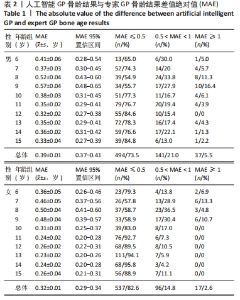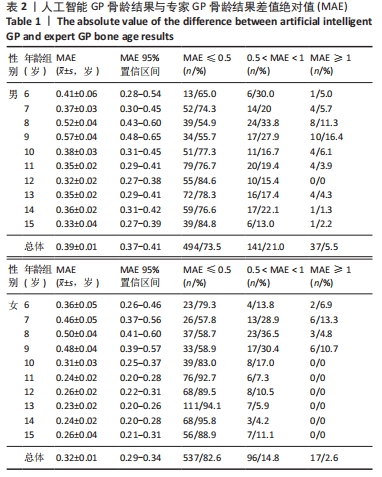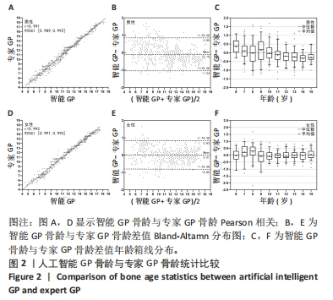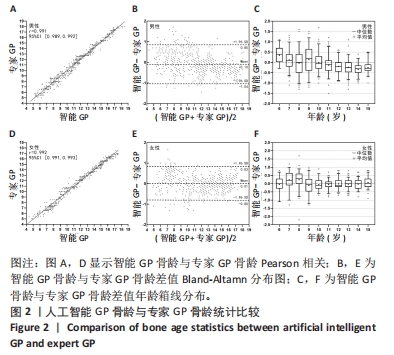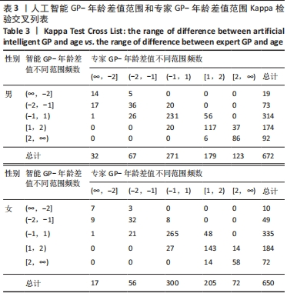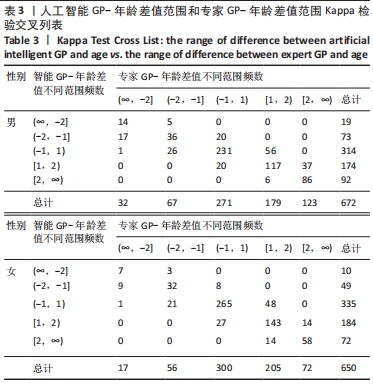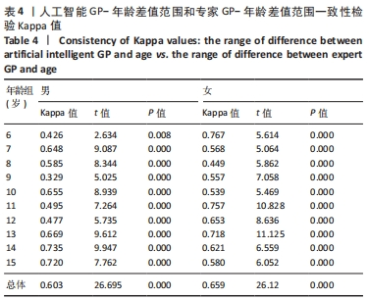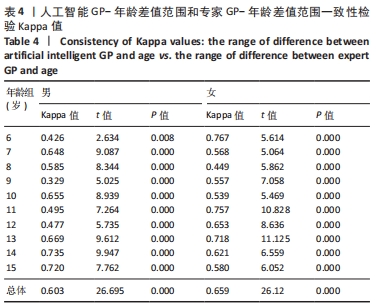[1] 程龙龙,汤鹏,罗方亮,等.应用医学影像学技术评定骨龄的研究进展[J].中国法医学杂志,2019,34(1):62-66.
[2] 王凤丹,次旦旺久,焦洋,等.人工智能在骨龄评估中的应用[J].基础医学与临床,2022,42(11):1776-1780.
[3] 李莉红,杨秀军,李婷婷.不同人工智能模型对基于手腕部DR影像的骨龄预测比较[J].临床放射学杂志,2019,38(8):1498-1501.
[4] 李睿,张世杰,黄奥云,等.基于深度学习的青少年手腕骨骨龄评价[J].计算机技术与发展,2020,30(1):124-128,134.
[5] BOOZ C, YEL I, WICHMANN JL, et al. Artificial intelligence in bone age assessment: accuracy and efficiency of a novel fully automated algorithm compared to the Greulich-Pyle method. Eur Radiol Exp. 2020;4(1):6.
[6] SIMU S, LAL S, NAGARSEKAR P, et al. Fully automatic ROI extraction and edge-based segmentation of radius and ulna bones from hand radiographs. Biocybern Biomed Eng. 2017;37(4):718-732.
[7] 文颖,任旭华,杨秀军,等.基于手腕部影像传统关注特征区域深度学习的人工智能骨龄评估[J].中华放射学杂志,2019,53(10):895-899.
[8] WANG F, GU X, CHEN S, et al. Artificial intelligence system can achieve comparable results to experts for bone age assessment of Chinese children with abnormal growth and development. PeerJ. 2020;8:e8854.
[9] WANG F, CIDAN W, GU X, et al. Performance of an artificial intelligence system for bone age assessment in Tibet. Br J Radiol. 2021;94(1120):20201119.
[10] 赵凯,马帅,孙佳丽,等.人工智能软件对住院医师X线骨龄诊断辅助效果初探[J].实用放射学杂志,2021,37(2):317-320.
[11] 宋娟,宫平,高畅,等.基于深度学习的儿童骨龄智能评估模型构建及初步临床验证[J].中华放射学杂志,2019,53(11):974-978.
[12] HALABI SS, PREVEDELLO LM, KALPATHY-CRAMER J,等. RSNA儿童骨龄机器学习挑战[J].国际医学放射学杂志,2019(2):240.
[13] ZHANG SY, LIU G, MA CG, et al. Automated determination of bone age in a modern chinese population. ISRN Radiol. 2013;2013:874570.
[14] 孙梦莎,丁永红,颜子夜,等.人工智能在儿童骨龄影像检测中的应用[J].中国医疗设备,2021,36(3):28-32.
[15] 李然然,杨芸晓,高剑波,等.人工智能支持系统辅助放射科医师评估骨龄[J].临床放射学杂志,2021,40(3):560-563.
[16] BOOZ C, WICHMANN JL, BOETTGER S, et al. Evaluation of a Computer-Aided Diagnosis System for Automated Bone Age Assessment in Comparison to the Greulich-Pyle Atlas Method: A Multireader Study. J Comput Assist Tomogr. 2019;43(1):39-45.
[17] 龙也,刘冰雪,周慧明,等.2387例儿童青少年骨龄调查分析[J].中国实用医药,2022,17(18):169-172.
[18] CREO AL, SCHWENK WF 2nd. Bone Age: A Handy Tool for Pediatric Providers. Pediatrics. 2017;140(6):e20171486.
[19] 冯佳楠.不同项目少儿运动员优势侧与非优势侧骨龄差异及影响因素的研究[D].北京:北京体育大学,2021.
[20] 周星栋.乒乓球9~14岁运动员阶段评价选材模型的构建[D].北京:北京体育大学,2020.
[21] 焦建明,范飞,邓小冬,等.基于深度学习的MRI骨龄评估研究进展[J].中国司法鉴定,2023(1):38-44.
[22] 黄卫保,林剑军,梁莎,等.国内外手腕部骨龄影像评估方法各自优缺点及研究进展[J].中国医疗设备,2020,35(10):181-185.
[23] 彭丽珍,陈俊杰,顾林,等.中华05法和G-P图谱法在儿童青少年骨龄评估中的效果对比研究[J].影像研究与医学应用,2022,6(20):86-88.
[24] 潘其乐,张洪,周慧康,等.Greulich-Pyle图谱法、CHN法和中华05法评估儿童青少年骨龄的比较[J].中国组织工程研究,2021,25(5):662-667.
[25] 蔡广,潘其乐,朱镕鑫.正常儿童青少年GP图谱法和中华05法评估骨龄一致性研究[J].中国循证儿科杂志,2020,15(6):441-446.
[26] 毛志敏.3种骨龄测评标准在儿童青少年数字骨龄片评价应用中的对比研究[J].现代医用影像学,2021,30(5):982-984.
[27] 张骥.骨龄评估软件BX应用分析及数字骨龄图谱研发[D].上海:上海交通大学,2017. |
